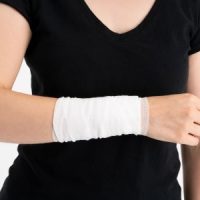Scarring After a Burn Injury

Burn injuries can have a profound physical impact on victims, as they are some of the most painful and debilitating injuries a person can suffer. Burns can also be emotionally damaging, leaving scars that serve as constant reminders of a victim’s accident. Burn-related scarring can also come with its own physical limitations as well, significantly restricting mobility.
Will My Burn Injury Leave a Scar?
As many as 70 percent of burn injuries leave scars, although in many cases, these scars can fade or improve over time. Whether a person ends up with scarring after sustaining a burn injury will also depend on the severity of that injury. First degree burns, for instance, which only damage the outer layer of the skin, usually heal without leaving any scarring behind. Second degree burns, on the other hand, which go deeper, are more likely to result in a scar, although that scarring could fade over time. Third degree burns penetrate all the layers of the skin and often the underlying tissues and almost always leave some sort of permanent scarring. Other factors that could affect whether a burn injury results in a scar include:
- The depth and size of the burn;
- The location of the burn on the victim’s body;
- How the wound is cared for during the healing process; and
- Genetics, which can affect scar vascularity, or redness, depending on the volume of red blood cells in a person’s tissues.
Read on to learn more about the kinds of scars that burn injuries can cause.
Types of Burn Scars
Burn scars occur when the skin heals, not with skin cells, but with thick fibers of collagen. The type of scar, however, will vary depending on the factors we already mentioned and include:
- Hypertrophic scars, which are raised and red in appearance, only develop within the boundaries of the injury, and while itchy and sensitive can improve over time;
- Keloid scars, which extend beyond the original site of the injury, are thicker and shinier, and tend to be more prominently raised; and
- Contracture scars, which are extremely thick and cause the skin to tighten and contract, affecting mobility.
It’s difficult to predict the type of scarring that a person will suffer after sustaining a burn injury. Fortunately, treatment after a burn injury can help manage or even prevent some of the worst scarring.
Managing Scarring After a Burn Injury
Burn injury victims often require a lot of treatment even after their burns have healed to help manage their scarring. This could include everything from wearing special pressure garments to soften and flatten scars to undergoing scar revision, which in turn can require surgery, steroid injections, or laser procedures. These treatments can be expensive, which is why accident victims are so often encouraged to seek compensation for these costs from the at-fault party responsible for their burns.
Reach Out to Our Fort Lauderdale Burn Injury Lawyers
To speak with an experienced Florida burn injury attorney about the kinds of compensation you could recover after an accident, please call Boone & Davis at 954-566-9919 today.
Sources:
ncbi.nlm.nih.gov/pmc/articles/PMC3685163/
hopkinsmedicine.org/health/treatment-tests-and-therapies/scar-revision
